

Head Shaking, Hanging the tongue out of one side of the mouth, refusing to accept the bit, being “behind” the bit, “playing” with the bit, drawing the tongue backward away from the bit, jaw tension.
Each of these behaviors may have a variety of causes and cures unique to the individual horse, its age and level of training.
One common cause of all of these behaviors, that should be considered for all cases, is tongue pain caused by muscle and myofascial tension in muscles that attach to the hyoid bone.
pressure from the bridle browband, noseband, bit, or tongue ties
tension from the rider’s pressure on the reins attached to the bit
improper use of “training aids” to force the head and neck into the desired frame
overwork or improper work of specific neck muscles
The horse engages in unusual behavior in the attempt to relieve the tension and pressure on the tongue and hyoid apparatus
People and horses have a hyoid bone, which is also called the hyoid apparatus. The hyoid is a small Y-shaped bony structure attached to the underside of the tongue. The functions of the hyoid are the same for both people and horses: support the tongue, support the actions of breathing, chewing and swallowing. The hyoid bone is not connected to any other bone, it is held in place by ligaments, muscles and cartilage. It is marked in this picture in red: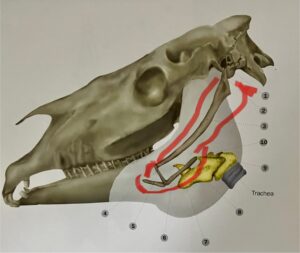
The muscles that control the tongue and airways, including those that attach to the hyoid apparatus are small and sit deep between the jawbones’ (the mandibular rami). These muscles control the position and function of the tongue, and also contribute to the opening of the pharyngeal airway during breathing.
In humans, disorders of the tongue and hyoid apparatus are rare and are usually caused by acute traumas, such as whiplash.
In horses, tension and inflammation of the muscles attaching to the tongue and hyoid apparatus happen frequently. The direct causes (listed above) of this tension are all man made in the horse’s training program and equipment. Here is a picture of the muscle attachments to the hyoid:
The occipitohyoid muscle attaches to the hyoid and extends upwards to attach to the horse’s occipital bone of the skull.
The sternohyoid and sternothyroid muscles attach to the hyoid and extend downward to attach to the horse’s sternum.
The omohyoid attaches to the hyoid and extends downward to attach to the medial scapula (shoulder blade)
This muscle moves the hyoid apparatus and tongue towards the back of the mouth. Tension in this muscle may present as the horse inappropriately drawing the tongue backward. The horse has no choice in this action. If this muscle is in a contracted state, the hyoid and tongue will be drawn backward.
Tension in this muscle can be caused by a tight browband on the bridle, or from challenging lateral movement exercises of the poll.
These muscles are located on the ventral aspect of the neck. Tension in these muscles can be created by forcing a horse to hold it’s head and neck in flexion for an extended period of time. The tension may come from too much collected work. Additionally, in the case of improper saddle fit, if the horse moves with a dropped back and and elevated head and neck, these muscles will be improperly developed and tight.
Restriction in theses muscles will put pressure on the tongue and hyoid and may also cause a shortened fore limb stride and/or a reluctance to go forward.
Be mindful and considerate of the muscle tension created by your hands, training practices training aids, bridles and bits. Take proactive steps to keep the muscles and fascia in the poll and neck flexible and free of tension. Learn how to perform simple massage techniques for your horse. Schedule time a few days per week to apply gentle massage to these areas. This consideration will greatly benefit your relationship with your horses and improve the results of your training sessions.
This Die Da Yao workshop will focus on the treatment of both human and equine trauma and sports injuries to soft tissue and bones, it will also cover treatment of skin abrasions, wounds and cuts.
This two-day course and is an excellent starting point for those interested in learning about practical Die Da Yao applications of herbal medicine skills for resolving injury trauma acute and chronic.
The course is highly recommend for therapists (human & equine), trainers, owners, and anyone interested in treating their own injuries, clients or horses in their care, with effective Die Da Yao therapies.
The goal of this program is that by the end of the course you will know exactly how to utilize Die Da Yao in order to speed healing, reduce recovery time, and prevent the trauma injuries from becoming a deeper chronic, debilitating problem.
The class combines lecture, demonstration, lab and plenty of hands-on practice.
What You Will Learn:
Individuals who have taken the time to learn about application of these herbs and formulas, have been rewarded with positive changes in their own and their horse’s health, as well as resolving long standing problems which may not have responded to western treatment methods.
Die Da Yao sports therapy is still in its infancy stage in the west, acupuncture faced the same skepticism when first introduced here. Now, 40 years later, acupuncture is an accepted form of therapy for every discipline of human and horse. The use of Die Da Yao for sports related problems, human and equine, is following suit.
“There are no incurable diseases – only the lack of will.
“There are no worthless herbs – only the lack of knowledge”.
Ancient Chinese Medical Text
This 2017 is the 10th anniversary of the 2007 Disney movie “Secretariat” which hit the theaters. One aspect of the movie never set well with me. The Disney villainizing of trainer Frank (Pancho) Martin, Sham’s trainer who was a top horseman and class individual.
Standing at the Belmont training track rail one day when I was 16, the trainer I worked for told Frank standing there that I wanted to be a horseman. Frank’s answer has always stuck with me “if you can watch a horse and see what’s wrong with them, you will be on your way to being a horseman.” My trainer, an old school himself said “Amen.” As a horseman, a little longer at the tooth now, I’ve always kept that advice close to heart and say also “Amen!”
Unfortunately, most people were introduced to Martin by the Disney movie “Secretariat,” which portrayed Pancho as a vulgar, mean-spirited heavy, a male version of Cruella De Vil.
Ron Turcotte, Secretariat’s jockey also had a problem with the way trainer Frank “Pancho” Martin was portrayed. Martin trained Secretariat’s rival, Sham. In the movie, Martin can across as a loudmouth, obnoxious lout. It came across in press conferences that involved the two camps. Turcotte said it wasn’t that way. “Pancho is a wonderful person, always was,” Turcotte said. “I loved him, he was great to me and it hurt me to see the way he was portrayed.”
Trainer native Gary Contessa was Martin’s assistant from 1980-84, and he learned well from the master. “That movie really made him angry,” Contessa said. “He was so ticked off. It didn’t show the real Frank (Pancho) Martin. He was difficult to get along with, but he had a good heart. If I’d been an adviser on the movie, they would have done a better job of getting him right.”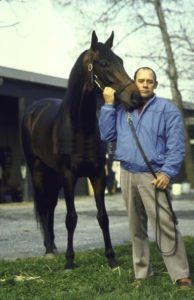
“What a great guy,” Contessa said. “I have so many fond memories of him. He had a temper and was a wild and crazy guy, but he had a heart of gold. Every Thanksgiving he’d give out 300 frozen turkeys on the backstretch, and at Christmas everybody got a present.”
Bill Nack covered the 1973 Triple Crown for Newsday. Nack was an adviser on the film, which was based on his excellent biography of Secretariat, and he agrees with Contessa. “I had nothing to do with making Pancho look like that, and I didn’t like it, either,” Nack said Friday by telephone. “That’s not the way Pancho was, and I told that.” A scene showed Martin being rude to Secretariat’s owner, Penny Chenery. Not so, Nack said. “I introduced them before the Preakness, and Pancho couldn’t have been more polite,”
Bill Nack had written the following article about the meeting: “Penny and Frank, the Real Meeting”
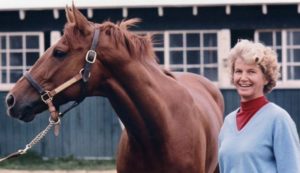 Penny brought a sense of grace to her role as owner. Ever since the week leading up to the Wood Memorial there was a rift between the two trainers of Sham and Secretariat and it lingered into Pimlico although it is simmered down a bit at this point. One day Penny approached me knowing I was on good terms with Martin, Penny asked me to introduce them if I saw a chance. “I’ve never met Frank Martin.” Penny said.” And I would like to.”
Penny brought a sense of grace to her role as owner. Ever since the week leading up to the Wood Memorial there was a rift between the two trainers of Sham and Secretariat and it lingered into Pimlico although it is simmered down a bit at this point. One day Penny approached me knowing I was on good terms with Martin, Penny asked me to introduce them if I saw a chance. “I’ve never met Frank Martin.” Penny said.” And I would like to.”
A few mornings before the Preakness I saw Frank sitting alone in front of Sham’s stall and Penny doing an interview at the other end of the shed. I told Frank that Penny wanted to meet him he lit up like a boy on Christmas morning. I then approached Penny and whispered to her that Frank was looking forward to meeting her. “Oh, good,” she said “let’s go.”
As Penny approached him Frank leaped to his feet like a young Cadet at West Point, looking like he was about to click his heels and salute. Instead he stuck out his hand, “Very nice to meet you Mrs. Tweedy,” Martin said. Penny said ” I heard so many nice things about you.” Thank you.”
They had a very pleasant chat. Sham hearing the chatter poked his head out of his stall. Penny patted his chocolate nose telling Martin what a nice horse he had. Sham nuzzled her upturned palm. Martin showed her where Sham hit his head on the gate in the derby. They wished each other good racing luck in the Preakness.
“Well thank you.” Penny said “It was nice to meet you.” “It was nice to meet YOU.” Martin responded. Penny’s was a lovely gesture and it’s stilled the troubled waters that existed between the two camps.
By Melissa Sykes
When we think of getting a massage, the picture most of us get in our mind is of a tropical vacation, white, fluffy towels and soft music. We usually equate a massage with something we only do for ourselves as a luxury. In other words, maybe we find the time and disposable dollars for one or two experiences in our lifetime.
But, imagine you are an elite athlete. Perhaps an Olympic level hurdler. Massage has a whole new meaning. It even has a different terminology – sports massage. The purpose is not only to relax you, but to help those muscles recover and strengthen from the exertion of training and competition. Regular sessions with a good sports massage therapist could mean the difference between the Bronze and the Gold.
Now, imagine you are a racehorse.
Many trainers have tapped into the benefits of massage for their horses, but even more think that a ‘good currying’ can just as easily get the job done. While a good currying doesn’t hurt, having someone who understands the biomechanics of the equine muscular system evaluate and treat tense or strained areas can help the trainer bring out the best in his athletes.
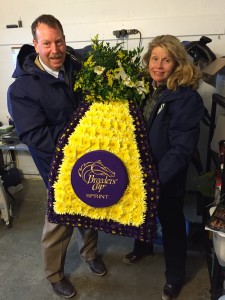 Don Doran has been practicing equine and human sports massage therapy for over 40 years and has been teaching his techniques for almost twenty five years. Based in Ocala Florida, he, along with his wife, Lisa, have become the secret weapon for many racing stables. Doran has put his hands on numerous past and present champions including Holy Bull, Musical Romance and, most recently, Runhappy.
Don Doran has been practicing equine and human sports massage therapy for over 40 years and has been teaching his techniques for almost twenty five years. Based in Ocala Florida, he, along with his wife, Lisa, have become the secret weapon for many racing stables. Doran has put his hands on numerous past and present champions including Holy Bull, Musical Romance and, most recently, Runhappy.
“I have been teaching equine sports massage at my school since 1993,” explained Doran. “As a lifelong horseman the jump was not from humans to horses, but just the opposite. I attended human massage school, specializing in sports massage, in order to bring the work over to the horses.” After spending a few years at the racetrack, ‘strapping’ as he called it, Doran learned a lot about rubbing racehorses. But, it was later, during his time in the U.S. Marine Corp. that he was first exposed to sports massage. “Getting that initial massage work when I was in the Marines really set off a light bulb in realizing what the old timers were trying to do with their horses (at the racetrack). That’s really when the idea of utilizing massage with racehorses took hold.”
After leaving the Marines in 1975 and returning to the track, Doran “utilized basic massage work over the next 15 years in various aspects of the thoroughbred world from the track to the farm with good results. But in order to improve my knowledge and bring it to the next level, I felt I needed to get professional training and decided to attend human massage school and specialize in sports massage.”
“One of the most common problems that I saw that massage could help was sore backs,” Doran said. With racehorses, trainers most often look at the legs, then maybe at the propulsion or rear end if a horse seems to be a bit off. The back is often completely ignored.
“One of the prime muscle groups of concern in the racehorse are the muscles of the back,” Doran explained. “This is often an overlooked area in the racehorse and often a primary causative factor of poor performance. The back is your main proprioceptor going through life, as anyone who has ever had a back problem knows – if your back is bothering you, all biomechanic movement is off.”
But what causes that horse’s back to be a problem? “Sometimes from saddle fit and placement, sometimes from poor riding from the exercise riders, and sometimes simply from the repetitive stretch and contraction of the long back muscles in the training.” The design of half tree exercise saddles tend to position a lot of exercise riders weight too far forward, where it interferes with the shoulder – a mistake many in the show jumping world also make. And using a half tree exercise saddle or one that doesn’t fit properly, according to Lisa Doran, can cause back pain and muscle atrophy. “A saddle is a system. The bottom of the saddle should be a mirror image of the horses back with relief at the front and back edges. The bottom of the saddle belongs to the horse and the top of the saddle belongs to the rider. It must work for both.”
An initial session with an equine sports massage therapist includes an overall assessment of which primary muscles might be especially tight and tense. The Dorans have come up with a 22-point checklist when evaluating areas to concentrate on. Beginning with the tempo mandibular joint (TMJ), they will palpate from the poll through the body touching on the neck, shoulder, chest, wither, back, belly, hip, rear, stifle, and groin areas. A muscle reaction is a sign of stress or pain. “Healthy muscle tissue does not hurt,” maintains Don Doran.
“If possible, I like to initially work with a horse over the course of 2-3 days. That way I can identify problematic areas and how well they are responding to the work,” said Doran. Over those few days, Doran can get a better assessment of how the muscles feel as well as getting real time feedback from the trainer and rider on how the horse is going. “After that, regularly scheduled work, depending on the stables schedule, helps to keep them supple.”
It’s never too early to start the horse on a massage program. “Ideally, I like to begin working with young horses in the initial stages of training – within four weeks of being saddled in order to get an assessment and reduce the stress of utilizing their muscles in an athletic way,” Doran said. “As the training program progresses, incorporating a professional sports massage therapist on a weekly, bimonthly, or even monthly basis can assist in preventing muscular problems down the road.”
Maximum benefit with the use of sports massage is achieved through regular sessions, elaborated Doran. If possible, the horse should be worked once a week or every other week as the muscles of an athlete in training are always tight and in need of relief. “On the outside, once a month. After that, things can really begin to get ahead of you.”
Doran believes in empowering his clients to participate in their horses’ program. “We like to offer guidance to the trainers and grooms on areas (of the horse) to concentrate on between visits. This can be done by teaching them some basic massage work at the farm or stable. Optimally daily spot work with a groom can really be of benefit. The more repetitive the work, the better the results.”
Once massage has been incorporated on a regular basis, it’s just a matter of keeping the muscles tuned and flexible. For instance in 2015, Doran started working with Runhappy about a month prior to the King’s Bishop Stakes (G1). A race in which the son of Super Saver set a new stakes record at Saratoga. He also received regular work from Doran leading up to his 2015 Breeders Cup Sprint win at Keeneland while setting a new track record. The sessions also continued thru Runhappy’s romp in the December 2015 Malibu Stakes at Santa Anita on opening day.
“With each session I like to evaluate his (Runhappy) overall muscular tension patterns for comparison to what I know to be his muscular base profile,” he explained. “I am looking for anything out of the ordinary which may show he is using his body and muscles in a different way. Being a racehorse, the major muscle groups used by runners on a daily basis are of prime concern. Maintaining suppleness and flexibility of the back muscles, gluteals, hamstrings, shoulder, and neck are of extreme importance to a runner. These muscles are worked with each session.” 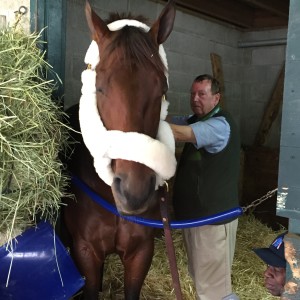
Doran begins his sessions with Runhappy by working with the neck and shoulder on one side. From there, he moves into the back, lower back and croup area. Next come “the hindquarter muscles of propulsion, the engine, to assist in increasing maximum power through maintaining suppleness, as well as reducing any residual muscular soreness due to the regimen of regular competitive training and racing.” Progressing from there he will begin to check the secondary and deeper muscular groups for any tension which may create off movement or effect the biomechanics of Runhappy’s movement.
“To say that Runhappy is a fit individual is an understatement,” Doran said. “With his specific training program Runhappy is a totally fit athlete that brings his “A” game to every race meet. Working with a top class athlete like that always brings a smile to your face.”
While Runhappy epitomizes what it means to incorporate sports massage in a program where the athlete is already fit and basically problem free, most trainers have at least one runner that stumps them when it comes to why they are not performing well. Aqueduct based trainer Eddie Barker watched as Doran was brought in to work with Runhappy while up at Saratoga. “I met Don and had him work on a couple of my horses,” said Barker. “I won two races the first week at Belmont with both of those horses. One was a filly that ties up something awful. I bumped her up in class and she won. He’s very, very good at what he does.”
Working on racehorses, or any equine athlete, is a matter of timing. Any major, deep work should be done at least 5 – 7 days before a competition or race. “The closer you get to competition, the less invasive you want to work,” said Doran. But even if the horse only has one massage session, the work can still be effective. “Sports massage is like peeling an onion,” he explained. “In order to get to the deeper muscular problems one must first eliminate the superficial problems and get to the core. Muscular problems start superficial, then proceed to affect deeper muscles as the problem progresses.”
The take away from equine sports massage? As Doran put it “The Sports Massage work allows the horse to reach and compete at whatever their maximum potential is”.
However, for most modern Americans they will “start” the history of acupuncture in 1972 when then President Nixon’s Secretary of State, Henry A. Kissinger, traveled to China accompanied by a journalist for the New York Times. While in China the journalist, named James Reston, fell ill and ended up in a Chinese hospital requiring an emergency appendectomy. To relieve his pain doctors used acupuncture. Intrigued and impressed with the effectiveness of his experience with acupuncture, James Reston wrote about his hospitalization and acupuncture treatment in the New York Times, exposing countless Americans for the first time to acupuncture.
One of the earliest known historical records of modern acupuncture were first introduced in the “The Yellow Emperor’s Classic” (Huangdi Neijing) around 100 BC. It is believed that this text was documenting what was already established practice by this time. By the 300s AD, most of the acupuncture sites in use today had been named and identified.
By the end of the Song dynasty (1279 AD), acupuncture had lost much of its status in China. It became rarer in the following centuries, and was associated with less prestigious healing professions. By 1757 a book documenting the history of Chinese medicine called acupuncture a “lost art”.
In 1822, the Chinese Emperor signed a decree excluding the practice of acupuncture from the Imperial Medical Institute. He said it was unfit for practice by gentlemen-scholars. In China acupuncture was increasingly associated with lower-class, illiterate practitioners. It was restored for a time, but banned again in 1929 in favor of science-based Western medicine. Although acupuncture declined in China during this time period, it was also growing and evolving in popularity in other countries.
In the 20th century in France, with the universal availability of electricity “Electro-Acupuncture” was introduced. This was the first use of inserted Acupuncture needles with the addition of specific electric current running between the needles.
Todays modern practices of Acupuncture and Electro-Stim has continued to evolve with this ancient healing art. The newest innovation is the ability to stimulate Acupoints and soft tissue without the use of skin puncturing needles. This is called “TEAS Electro-Acupressure”. Far more powerful than “Acupressure”, or even needles alone, Electro-Acupressure brings the ancient healing art to the modern age and allows individuals to directly use it for themselves or their horse’s wellbeing.
As in use with people, the majority of individuals who utilize acupuncture for their horses do so for musculoskeletal problems, including back pain, shoulder stiffness, neck and stifle (knee) pain. TEAS Electro-Acupressure excels at bringing fast relief to these areas with the advantage of not having to insert needles into an already painful area. This advantage can become readily apparent when working with horses whose muscular problems are in a sensitive state. Relief with no downside is now available to all.
Another advantage of TEAS Electro-Acupressure is that a practitioner does not have to be as precise as with the insertion of needles. This is because the current delivered through the 2”electrode pad stimulates a larger area than the needle itself. The electric current between the pads stimulates or sedates along the meridian affecting numerous Acupoints as well as the soft tissue bringing relief almost instantly.
Clearly Acupuncture throughout history has continued to evolve. Its modern incarnation of “Electro-Acupressure” has become I believe what the ancients practitioners always sought, the ultimate healing modality for soft tissue problems available to all who seek it out for themselves and their horses.
No matter what area of the body suffers an injury it goes thru 4 stages of recovery according to Die Da Yao. The 1st stage is acute, the 2nd stage is post-acute and the 3rd stage is chronic. The 4th stage of recovery, Moxibustion, is utilized for removing any last vestiges of the injury. Lets look at the process for the 2nd stage.
After the 1st acute stage has passed in 2-3 days and swelling is reduced, the circulatory system begins to clear away the damaged tissue and the remaining swelling and pain begins to decrease.
We now enter the 2nd stage of the Die Da Yao healing process. The 2nd-stage of soft tissue damage is that period during which swelling and pain still exist but in a much less severe form. This 2nd stage can last up to three weeks. At this point the local area begins to turn deep-red and purple indicating stasis of blood and qi.
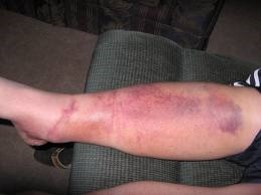 Often the individual suffering the injury has rested it in the 1st stage and it begins to feel better. However, they soon find that that the pain returns when they begin to (often too soon) resume their normal activity. This is usually the result of not knowing how to treat the injury thru the various stages of healing. Unfortunately due to the rush of modern society, individuals begin to stress the injury too early and bounce between the 1st and 2nd stage hindering permanent healing.
Often the individual suffering the injury has rested it in the 1st stage and it begins to feel better. However, they soon find that that the pain returns when they begin to (often too soon) resume their normal activity. This is usually the result of not knowing how to treat the injury thru the various stages of healing. Unfortunately due to the rush of modern society, individuals begin to stress the injury too early and bounce between the 1st and 2nd stage hindering permanent healing.
The treatment principle at this juncture is to soothe the sinews, dissipate stasis and quicken blood. Light massage (above and below the traumatized location), Die Da Yao herbal salves, acupressure and Die Da Yao soft herbal plasters should be used as the primary treatment.
Clearing heat now becomes secondary to dispelling stasis and moving the blood. With the reduction of heat at the injury site the use of salves and plasters can begin. The healing oils in the salves would retain too much heat in the 1st stage but can now be used to achieve a deeper healing process.
The strategy of treatment in this 2nd stage is similar to the 1st stage. However herbal formulas used in this 2nd stage are designed to assist in dispelling dampness (excess intercellular fluid) and wind (disruption of the body’s natural cycle) and removing stasis. The salve oils, healing in their own right, with infused herbs are used to carry the formula for a deeper healing penetration of the injury site.
The use of the proper herbal combinations help to prevent the area from becoming a deep seated chronic bi (bone) condition. If the partially healed injury is left improperly treated at this point, it can lead to continual discomfort and pain throughout a lifetime.These improperly healed injuries can lead to improper bio mechanics thru offsetting of the injured area pain, creating weakened muscles and overstressing other soft tissue.
The weakness of the injured area also has a cascading effect, stressing the surrounding muscles, tendons, and ligaments. This often is a root cause of instability to joints leading to deeper bone and articular cartilage problems.
During days 4 through 21 post-injury, the body is going through this post-acute stage of healing. The inflammation process will gradually decrease, but pain, especially at the end of range of motion, may still be a factor in some injuries.
Scar tissue continues to grow, the new growth of capillaries bring a fresh supply of blood and starts to form connective tissue. This process, called angiogenesis or revascularization, is key to repairing the damaged area. However, the tissues remain extremely fragile and easily damageable. If exposed to excessive stress the injury can easily return to a 1st stage condition. However, limited activity and exercise during this stage may cause muscle weakness.
Since the damaged tissue is so fragile, much care must be placed on not performing any activity that could damage the new growth. If this tissue is damaged, the pain may be very intense and the injury might return to the acute stage. So, it is recommended that the injured individual start with gentle movement that doesn’t stress the tissue and continue to limit unnecessary activity.
Toward the end of this stage, intensity and duration of exercise and movement activity may be increased as tolerated. At this point, mild isometric exercise could help to strengthen the damaged area. These low-intensity exercises can help address any muscle weakness from inactivity as well. Light stretching, gentle Yoga, and Tai Qi exercises will also be beneficial.
By adhering to the Die Da Yao healing procedures when treating an injury, an individual can expect to speed recovery, while regaining full mobility and strength at the injury site. By following this Die Da Yao pattern it will assist in preventing future deeper seated problems which will return to plague the individual at a later date. No wonder the ancients developed this healing modality and the reason Die Da Yao has been around thousands of years!
Die Da Yao
1st Stage Injury/Trauma Treatment
With the onset of a soft tissue injury it is important to recognize that this is but the first stage of 4 stages of recovery in Die Da Yao. It is also important to note that this 1st stage of proper Die Da Yao treatment will determine the degree of full soft tissue recovery. Correct treatment protocols will minimize the later chronic stage which can become debilitating for months after the initial injury, and especially years later in life.
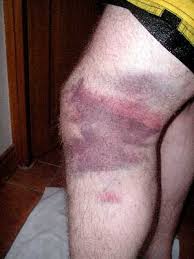 The first-stage of injury is defined as the period in which swelling, pain and redness are prominent. In milder conditions this will usually last 2-3 days. In more severe contusions this period can last 4-7 days.
The first-stage of injury is defined as the period in which swelling, pain and redness are prominent. In milder conditions this will usually last 2-3 days. In more severe contusions this period can last 4-7 days.
After the initial trauma, the local blood vessels dilate and blood flows to the region increasing fluids creating the inflammatory process. The result is the swelling, redness and pain associated with inflammation. The Die Da Yao principal of treatment at this point is to move the blood, clear the heat, dissipate swelling and relieve pain.
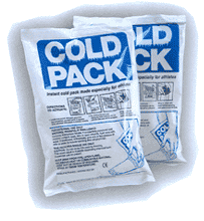 The usual protocol in the West at this point is to ice the injury. However the use of ice would be contraindicated in Die Da Yao. Icing does reduce the blood flow, but according to Die Da Yao principles retards the healing process by creating stagnation at the injury site. Interestingly enough, a number of articles have been published recently in Western Physical Therapy and Sports Massage publications dispelling the use of icing for injury. So, NO to ICE!
The usual protocol in the West at this point is to ice the injury. However the use of ice would be contraindicated in Die Da Yao. Icing does reduce the blood flow, but according to Die Da Yao principles retards the healing process by creating stagnation at the injury site. Interestingly enough, a number of articles have been published recently in Western Physical Therapy and Sports Massage publications dispelling the use of icing for injury. So, NO to ICE!
What Die Da Yao protocols are recommended then to replace icing and begin the 1st stage of healing? While most people are familiar with liniments, especially warming liniments, few are familiar with the cooling liniments or “Herbal Ice” liniments of Die Da Yao. In using a liniment, or liquid it is referred to as Die Da “Jao” (Jow). The word “Yao” is classical referring to ointments, poultices and salves but is used in the generic sense.
Application of an herbal “Jao” cooling liniment or “Herbal Ice” such as “Cool Brace” and “Cool Brace” Die Da Yao poultice forms the basis of treatment in this first stage.
Heat and compresses are avoided because they aggravate inflammation by dilating blood vessels and encouraging hyperemia. These are always utilized in the latter stages of recovery.
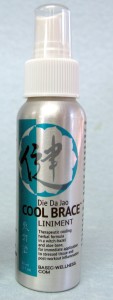 “Cool Brace” Die Da Jao spray on is a combination of Chinese and Western herbs in a soothing base of Which Hazel and Aloe Vera. Chinese herbs such as Frankincense and Myrrh, (yes this healing duo has been utilized in Chinese medicine for thousands of years) combined with other cooling and blood moving herbs, reduce inflammation and pain in conjunction with speeding healing. The addition of Western herbs such as Arnica, Comfrey and Calendula provide a powerful combination to assist faster recovery in this initial 1st stage of healing.
“Cool Brace” Die Da Jao spray on is a combination of Chinese and Western herbs in a soothing base of Which Hazel and Aloe Vera. Chinese herbs such as Frankincense and Myrrh, (yes this healing duo has been utilized in Chinese medicine for thousands of years) combined with other cooling and blood moving herbs, reduce inflammation and pain in conjunction with speeding healing. The addition of Western herbs such as Arnica, Comfrey and Calendula provide a powerful combination to assist faster recovery in this initial 1st stage of healing.
Spraying the “Cool Brace” on several times a day and massaging into the affected area is recommended. If possible, application of a “Cool Brace” soak is HIGHLY recommended at this stage. The soak would consist of a paper towel, or other absorbable pack soaked with the “Cool Brace”. Place this over the affected area and fasten with an ace bandage, loosely but firmly applied to keep the soak in place. Keep the soak moistened with Die Da Jao “Cool Brace” throughout the day and evening for the duration of any heat or swelling.
The Die Day Yao “Cool Brace” poultice should be applied at night time thru the next morning. Then repeat the daytime procedure until the 1st stage passes, usually 2-3 days or in more severe cases 4-7 days.
Following these guidelines will lead to a faster recovery and quicker resolve of the injury without the chronic on set which seems to be the usual case these present days.
I have had amazing results with clients, both Human and Equine, in the 1st stage of injury utilizing “Cool Brace” “Die Da Jao”. Utilizing this system in conjunction with the next 3 stages of recovery often results in totally avoiding a chronic condition which often reoccurs and leads to debilitation.
Those next 3 stages will be reserved future blogs!
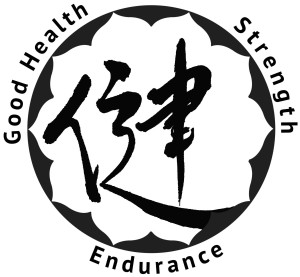 Die Da Yao: The ancient art of Herbal Trauma Therapy for Horses and Humans
Die Da Yao: The ancient art of Herbal Trauma Therapy for Horses and HumansTraditional Chinese Medicine (TCM) is unique in it’s theories and therapies. Most practitioners of oriental therapies are familiar with the modalities of Massage (Tui NA), Acupuncture, and Acupressure.
However an important component of TCM is the external use of herbal preparations in conjunction with these bodywork modalties called “Da Die Yao” which translates as Fall/Hit Medicine. The external use of Die Da Yao formulations has a long history, is effective, practical, and has wide indications even in the modern world.
Considering that 85% of the world’s population utilizes raw herbs as their primary source of medicine gives credibility to the fact of the healing powers of the herbal kingdom. In the cannons and practice of oriental therapies, only 20% of patients are treated solely through the sole use of manual therapies.
The additional 80% of clients are always treated in conjunction with herbal formulas, internally, externally, or a combination of both. As noted, these external oriental therapies include Massage (Tui Na), Acupuncture, and Acupressure.
These percentages hold true for practitioners of massage & oriental therapies working with humans and horses. The use of external ointments and liniments in conjunction with human bodywork is referred to in ancient texts as “Die Da Yao”, often referred to in the more common western spelling as “Dit Dow Jow”.
The external use of herbs has its origins in the ancient Shaolin martial arts schools of China, this was proceeded by the Buddhist monasteries of India and Tibet. With an impressive clinical history of over 2,500 years, this “Trauma Medicine” or “Hit Medicine”, is commonly known in China as “Die Da Yao” or “Jao”.
 Frequent injuries due to warfare, personal and property protection, personal and sports training injuries gave rise to the specialty of the “Die Da Yao” practitioners. Die Da Yao originates from “Buddhist Herbal Monk Medicine” or “Seng Yi” as practiced by the monks of the Shaolin temples and Tibetan Buddhist monasteries.
Frequent injuries due to warfare, personal and property protection, personal and sports training injuries gave rise to the specialty of the “Die Da Yao” practitioners. Die Da Yao originates from “Buddhist Herbal Monk Medicine” or “Seng Yi” as practiced by the monks of the Shaolin temples and Tibetan Buddhist monasteries.
“Seng Yi” utilizes methods of healing injuries sustained through physical exertion and injury with herbal applications. These herbal formulas were passed on orally and in scriptures through the centuries before finally being committed to written western words in the 20th century.
The external and internal use of herbs is often referred to as the missing link in the healing and recovery of the client. This lack of knowledge and understanding of Die Da Jao regulated the use of herbal preparations to the fringes of the western therapy world and dismissed its effectiveness.
Substituted in it’s place are cheap (and expensive), diluted, over the counter salves, ointments and liniments. These products mostly contain capsicum or menthol which creates a numbing effect to reduce pain temporarily. Within the equine world many of the more severe external products depend on skurfing and blistering the skin in the name of assisting healing. These types of applications could not be further from the healing tenets of Die Da Yao as used through the centuries
As it has always been written in the world’s healing medical cannons: “First do no harm”. This should always be the main consideration in any injury treatments, Human or Equine. The ancient Die Da Yao texts have always extolled this thought.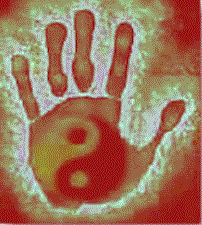
Belmont was packed that spring day in 1989. Everyone there was hoping to be an eye witness when Sunday Silence became the first Triple Crown winner since Affirmed.
As it often happens in racing, you sometime have to settle for second place. Home court advantage ruled that day and Easy Goer made sure that there was no Triple Crown horse that year. But what a race. It was among one of the 10 best races I have seen in my lifetime.
But the backstretch story is often the most interesting. After the race I went back thru the tunnel to the spitbox to check the horses out. Easy Goer had finished his bath and was cooling out in the spitbox shed row. It had started to rain lightly and I was watching Sunday Silence get his bath in the courtyard. I guess the light rain was keeping everyone away because there were no fans nor reporters around. I was the only one there.
As there was no Triple Crown horse that year, there was no Triple Crown trainer that year either. If Sunday Silence had won it would have crowned the career of one of the greatest thoroughbred trainers of the 20th century, Charlie Whittingham. Winning this race literally would have been the crowning jewel for his training career. To boot, there would have also been a bonus check of $5 million dollars for Sunday Silence (and a nice chunk of change for the trainer).
I was in the process of taking a picture of Sunday Silence, who had just finished his rinse and scrape, when Charlie walked out of the spitbox barn and into the courtyard. Charlie carefully looked his horse over and Sunday Silence, ears perked, looked at Charlie. Charlie then reached into his pocket, pulled out a peppermint, unwrapped it and held it out in his hand to an eagerly expectant Sunday Silence. I snapped the photo just then, freezing the moment in time. The backstretch story was that Sunday Silence was a tough colt when he originally came tot he Whittingham barn. Charlie had made friends with him by feeding him peppermints. It was bribery and reward cementing a friendship between the two of them.
They had just lost the elusive Triple Crown by a nose. Odds are that the trainer will never have that chance again, and he is out a $5 million dollar bonus. All that was secondary to Charlie Whittingham as he gave Sunday Silence that peppermint. the horse ran his heart out, tried his best, came back sound and will go on to race and win again. That is all that matters to a true Horseman. That’s what that photo of Charlie and Sunday Silence shows: just who Charlie Whittingham really was and what it is to be a great Horseman.
I was lucky enough on that rainy afternoon at the Belmont spitbox to get a glimpse of greatness and be able to share it with you. As Charlie liked to say about a horse when he was testing their ability, “Let’s find out where Molly hid the Peaches!”
Molly didn’t hide the peaches much at all that day when it came to Sunday Silence’s or the trainer’s ability. The peaches and peppermints were right out there for everyone to see.